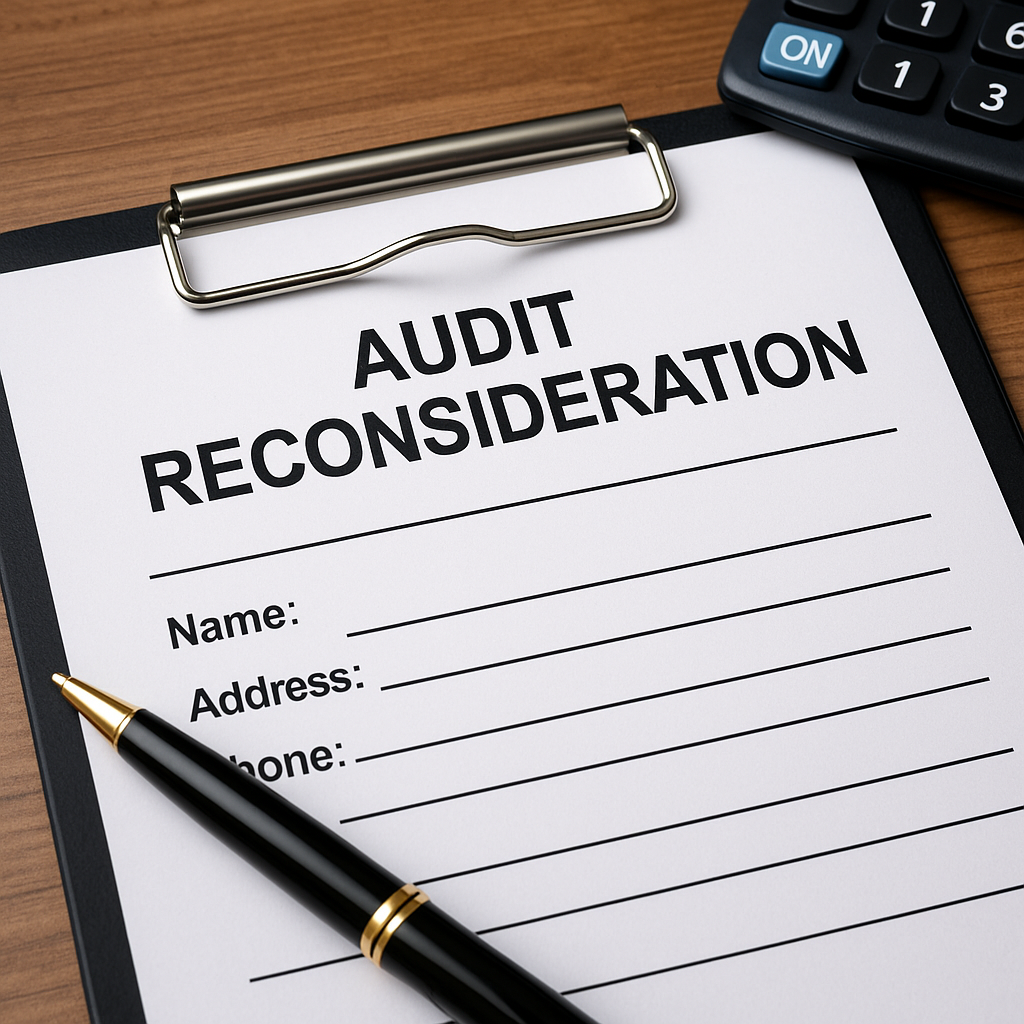
Audit Reconsideration: How to Get the IRS to Give You a Do-Over (Yes, It’s Possible)
So, the IRS audited you, and now they say you owe more money than you think is fair.
Maybe they didn’t see all the facts, maybe you didn’t have your documents ready, or maybe their math was… well, let’s just say it wasn’t winning any awards.
Here’s the good news: the IRS does allow second chances. It’s called audit reconsideration, and it’s basically the tax-world equivalent of asking for a “do-over”—minus the playground and kickball.
What Is Audit Reconsideration?
Audit reconsideration is your way of saying to the IRS,
“Let’s talk about this again. I have new information, and I think you’ll see things differently once you have it.”
It works best if:
You found new documents the IRS didn’t review.
The IRS made a factual or math error (and yes, they do make them).
They taxed you on income that isn’t yours—for example, your ex-spouse’s mysterious “side hustle.”
You never even got the audit notice in the first place.
It’s not as formal as filing an appeal—you’re not walking into a courtroom in a suit—it’s more like sending the IRS a “Hey, wait a second…” letter backed by solid evidence.
When You Should Use It
Audit reconsideration is a great tool if:
You didn’t know about the audit until it was too late.
You’ve dug up new proof—like receipts, contracts, or bank records—that changes the story.
The IRS made a mistake because they didn’t have the full picture.
If you have no new information, though, the IRS isn’t likely to reconsider. (Think of it like asking your boss for a raise with the exact same argument you used last year—it’s not going to land.)
How Audit Reconsideration Works
Here’s the step-by-step game plan:
Gather Your Evidence
Receipts, statements, canceled checks—anything that backs up your side of the story. If it’s in a shoebox, now’s the time to get it out and organized.Write Your Letter
Explain why you disagree with the audit results and what new information you have. Keep it clear, polite, and free of sarcastic remarks (as tempting as they may be).Include the Audit Report
Attach a copy of your IRS examination report (Form 4549) and any letters you got from them.Send It In
Mail your packet to the IRS office that handled your audit. Never send your original documents—copies only.Wait for Their Review
This part requires patience. The IRS moves at its own speed—somewhere between “molasses in January” and “your teenager cleaning their room.”
Important Things to Remember
No guarantees—they might still stick with their original decision.
Interest and penalties may keep adding up while they review your case.
Time matters—act quickly to prevent things like wage garnishments or bank levies.
New evidence is key—without it, reconsideration isn’t going anywhere.
Why You Don’t Have to Do This Alone
Sure, you can try audit reconsideration on your own, but having a tax pro in your corner is like having an experienced guide when hiking a tricky trail—you could get there on your own, but it’s a lot easier (and safer) with help.
At Day Tax Advisors, we:
Review your audit line-by-line to find errors.
Collect and organize the best evidence for your case.
Handle all the IRS back-and-forth so you don’t have to.
Bottom Line
If the IRS got it wrong, you shouldn’t be the one footing the bill. Audit reconsideration gives you a shot at setting things straight—without reliving the whole audit nightmare from scratch.
📞 Call Day Tax Advisors today and let’s make your IRS “do-over” count.
